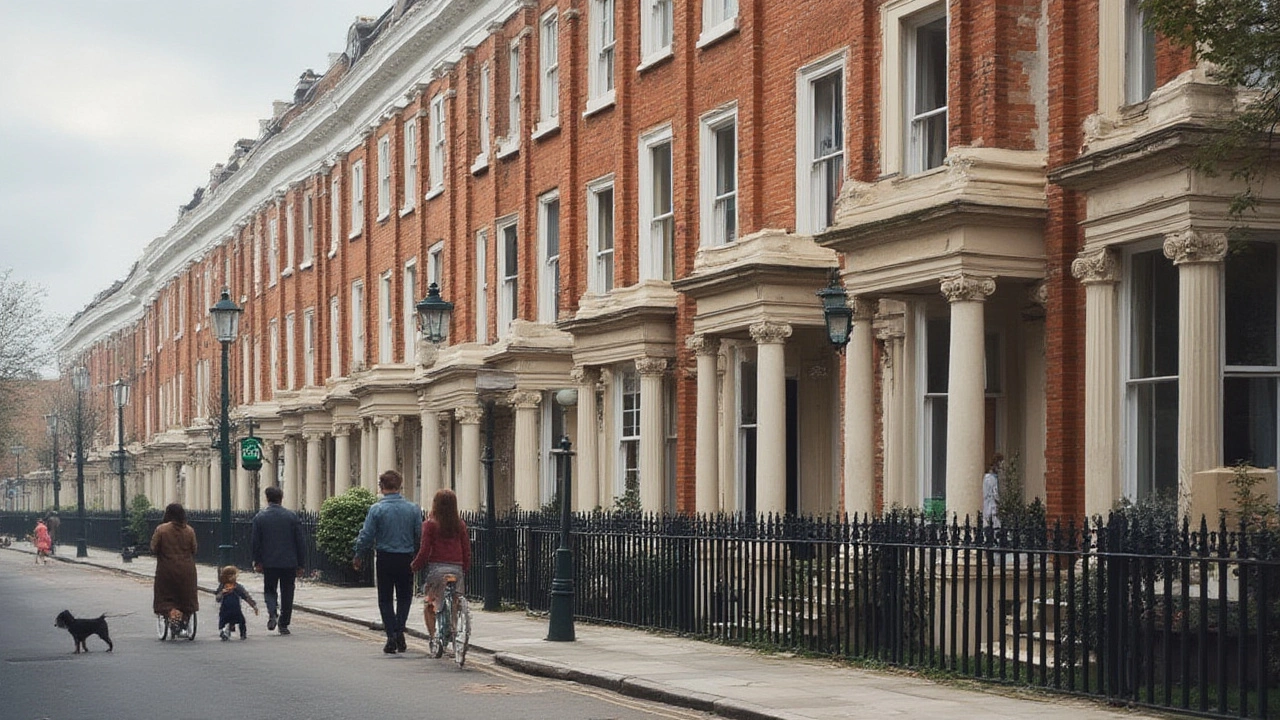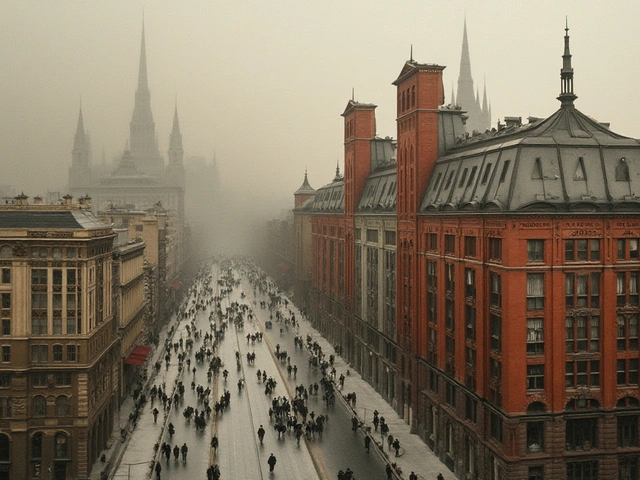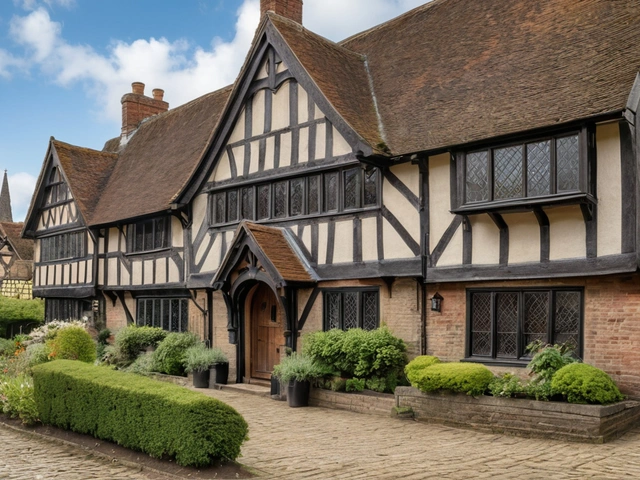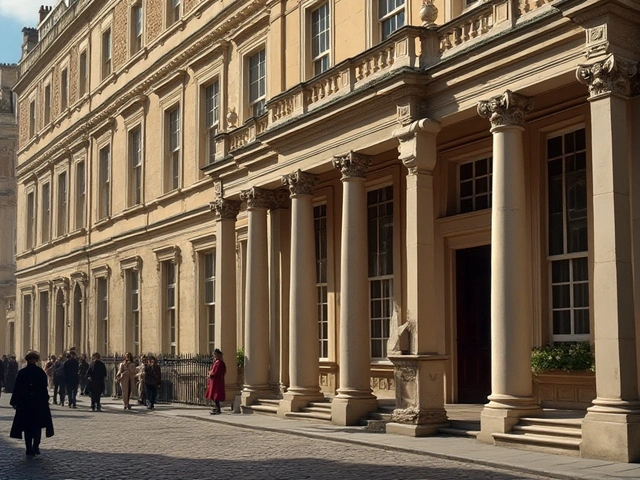Step inside a world shaped by precision, symmetry, and quiet grandeur. Walk down nearly any historic street in London, Bath, or even Boston, and there’s a fair chance your gaze lands on a beautiful row of Georgian buildings, all watched over by neat sash windows and crowned with dignified facades. Their treat for the eyes isn’t just chance—it’s the outcome of clear ideas, Enlightenment-fueled ambitions, and a splash of drama thrown in by wealthy 18th-century Brits who wanted their homes to shine. Georgian architecture isn’t some cozy footnote; it’s the backbone of cityscapes from England to the U.S. east coast and even Sydney. People still chase the Georgians’ sense of proportion today because it simply doesn’t go out of style. What is it about those clean lines and classical ornaments that just works?
Historic Roots and Inspirations
The story of Georgian architecture starts with a royal twist—named after the four King Georges who ruled Britain from 1714 to nearly 1830, and it’s all about taking classical ideas and giving them a fresh, modern sparkle. This era landed smack in the heart of the Enlightenment when new science, philosophy, and ideas changed how people imagined space. Georgian design drew inspiration from ancient Rome and Greece, funneled through Italian master architects like Andrea Palladio. While Palladio’s 16th-century villas are nestled under the Venetian sun, his blueprints traveled across the English Channel, where they were reimagined by architects like Colen Campbell and Robert Adam.
Early on, the style was reserved for the rich—country houses with perfect symmetry, boxy shapes, and endless lawns. But as the years ticked by, Georgian architecture found its way into city squares, townhouses, public buildings, and smaller homes. If you look at The Circus in Bath (built by John Wood, the Elder, in 1768), it’s a perfect example of the order and beauty people craved—sweeping curved terraces, every house in harmony. The British Parliament, the expansion of London’s West End, Boston’s Beacon Hill—these spots owe their crisp looks to the age of the Georges.
Influential pattern books—almost like Pinterest but in the 1700s—spread these designs to builders everywhere. Everyone wanted the same: strict symmetry, even proportions, and classical columns. Georgian architecture even caught a lift across the Atlantic with settlers, shaping American cities just before and after the Revolution. It’s wild to think about how these trends “went viral”—one craftsman in Bristol might copy a design that was first sketched in Venice.
An important fact: the obsession with symmetry wasn’t just about showing off taste. Enlightenment thinkers believed orderly spaces made for better, more rational living. Georgian building wasn’t just about looking good; it was about building a smarter society from the ground up. As you can see from how popular this style still is—just look at modern Georgian-inspired homes—it worked.
Core Features and Iconic Elements
What jumps out when you see a real Georgian building? That answer is simple: balance. These houses practically measure themselves—they’re famous for rigid, eye-pleasing symmetry, flat facades, and central doorways that act like the anchor to everything else. It’s not unusual to see five windows in a perfect line above a centered front door. Columns, usually inspired by Greek Doric and Ionic styles, sometimes frame these entrances, adding to the impression that the place means business.
The windows define the style as much as anything. Classic sash windows—those tall, multi-paned, sliding slices of sunlight—are so reliable and practical that you’ll spot them everywhere there’s a Georgian building. The larger panes at the bottom, with smaller ones above, allowed for air flow and light long before air conditioning was even a dream. Georgian windows tend to be evenly spaced and stacked directly above each other, reinforcing that symmetry.
Bricks are the backbone of these homes, usually red or pale cream, set in clean rows. In wealthier places, stucco or creamy stone dresses up the facade. Stringcourses—horizontal lines of brick or stone—separate stories, while raised keystones above windows show off a little extra craftsmanship. Rooftops don’t shout; they’re typically shallow, hipped, or even hidden behind decorative parapets. No garish towers here—just calm, flat silhouettes that make the buildings seem effortlessly dignified.
Inside, things get just as orderly but with a softness: intricate ceiling cornices, wooden paneling, and stately fireplaces draw the rooms together. Decorative elements rarely overpower—moldings, carved doorways, and stuccoed ceilings add refinement without fuss. The famous ‘Adam style,’ popularized by Robert Adam, introduced slender decorative motifs like swags, urns, and delicate rosettes, giving interiors a light, almost ethereal feel.
- Symmetrical facades and windows
- Centralized grand entry doors, often flanked by columns or pilasters
- Sash windows with multiple panes
- Minimal roof pitch, parapets
- Use of brick or stone
- Decorative cornices and classical detailing
- Delicate interior features like ornate ceiling roses, fireplace mantels, and paneling
Oddly enough, rules were sometimes deliberately bent for practical reasons. Back doors for servants, coal cellars hidden under stoops, and small mews houses—these quirks show that beneath the formal exterior, Georgian homes were surprisingly inventive. And here’s a tip: if you spot a fanlight window above the door, that’s a true Georgian classic. These semi-circular or elliptical glass panes were status symbols, filtering light into the grand entrance hallway and setting the scene for every guest who walked in.
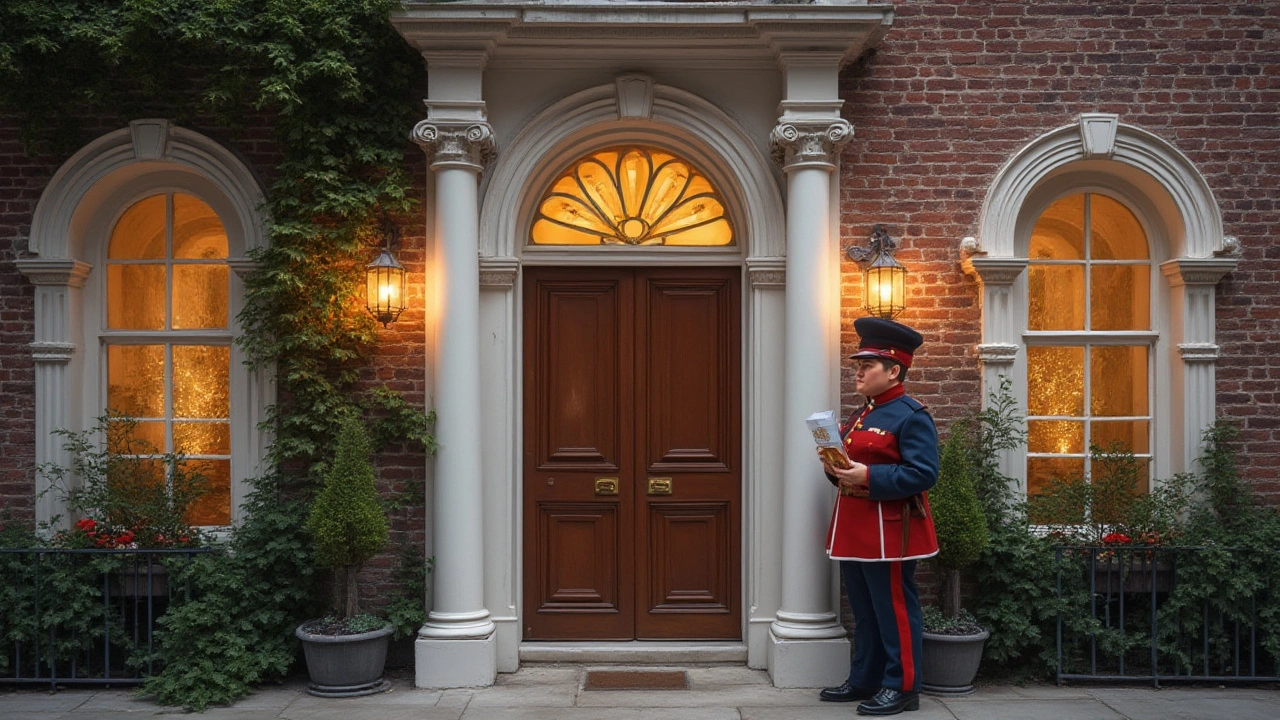
Georgian Architecture Around the World
Georgian style didn’t just stay stuck in one corner of England. It followed the British Empire as it spanned the globe, shaping surprising corners of the world. In the United States, Georgian buildings tell a story of colonial ambition. Cities like Savannah and Charleston still boast entire districts built in this mode—walk down Philadelphia’s Society Hill or Boston’s Beacon Hill, and you’re deep in Georgian heritage. Even many early American universities, like Princeton or the University of Virginia, borrowed heavily from Georgian rulebooks to design their sprawling campuses.
In the Caribbean, you’ll find Georgian mansions adapted for hot climates—big shuttered windows, high ceilings, and deep verandas made life bearable under the sun. In Australia, cities like Sydney picked up on the style for government buildings and homes as settlers transported British trends down under. These adaptations weren’t slavish copies; local materials, climate, and needs tweaked the look while the underlying style shone through.
If you’re touring in Ireland, Dublin’s Georgian Quarter is jaw-droppingly beautiful—Merrion Square feels almost untouched since the 19th century. Even today, strict rules keep the area’s symmetry and style intact. In Scotland, majestic Georgian crescents in Edinburgh (like the Royal Crescent) helped set the gold standard for city planning.
Georgian-style architecture was so pragmatic that its best features—simple shapes, tall windows, clean lines—continued to influence later styles like Regency and Federal in the U.S. Even the Victorians, known for their fancy flair, kept some of the Georgian logic in their layouts. And modern architects still fall in love with the sturdy, rational beauty of Georgian proportions.
Here’s a handy table comparing key elements of Georgian style as it moved around the world:
| Region | Main Materials | Notable Features | Famous Example |
|---|---|---|---|
| England | Brick, stone | Sash windows, symmetry, parapets | The Circus, Bath |
| United States | Brick, wood | Central door, cupolas, columns | Drayton Hall, SC |
| Caribbean | Coral stone, wood | Shutters, wide verandas | St Nicholas Abbey, Barbados |
| Australia | Sandstone, brick | Raised floors, broad eaves | Hyde Park Barracks, Sydney |
| Ireland | Brick, limestone | Fanlights, ornate doorways | Merrion Square, Dublin |
This global reach proves that great design travels far when it’s rooted in solid ideas—order, comfort, and eye-pleasing lines. Today, you can spot Georgian influences in new neighborhoods being built from scratch with color-matched bricks and slim sash windows that echo those originals from 1720.
Living With Georgian Architecture Today
Living in or restoring a Georgian house is a unique balance between history and modern comfort. You’re dealing with buildings designed centuries ago—but they’re incredibly well suited for the way people actually live today. Professional renovators and homeowners often say the same thing: keep the proportions, protect the materials, and let the elegance shine. If you’re considering a Georgian home, check the basics first—solid bricks, working sash windows, and a dry foundation make all the difference. Modern sash windows with double glazing are now available in classic designs, so you don’t have to compromise on comfort.
Caring for a Georgian house means minding those original details. Don’t sand down the panel doors or cap the original wooden floors if you can help it—those are features that make the house valuable and honest to its roots. If you’re dealing with period paint colors, think creamy whites, mossy greens, and a dusty teal called ‘drab’—these shades were all the rage in 18th-century paint shops. Traditional lime plaster on the walls helps the building ‘breathe’ in a way that modern cement can’t match.
Smart tips for Georgian homeowners and admirers:
- Keep or restore original cornices, ceiling roses, and fireplace surrounds; reproductions rarely match in quality or charm.
- Maintain – or reinstate – working window shutters; they keep out cold in winter and heat in summer, just as intended.
- Use period-appropriate hardware for doors and windows, like brass knobs or rim locks.
- Avoid lowering ceilings or dividing up principal rooms—Georgian architecture is about grand, open spaces.
- Protect original brickwork by avoiding harsh cleaning products or waterproof coatings that could trap moisture.
- If you’re adding on, keep new elements simple and in tune with the *Georgian architecture* style—think straight lines, symmetry, and classical details.
Georgian style has a kind of timeless magnetism. Film directors choose it for Jane Austen adaptations because it instantly sets a period mood. Homeowners love it because it feels calm, light, and roomy. Developers mimic it precisely because the combination of symmetry, wide windows, and stately entrances simply works—it survived revolutions, wars, and several taste overhauls to become a shorthand for elegance and order in cities all over the world.
Maybe most surprisingly, Georgian buildings aren’t museum pieces. They’re living spaces for real people, whether that’s university professors in Dublin, families in Boston, or artists in Bath. Their bones are solid, their details rewarding, and their sense of order brings big comfort in our messy world. Stand in front of a Georgian terrace just once, and it’s easy to see why this style just keeps coming back around.

